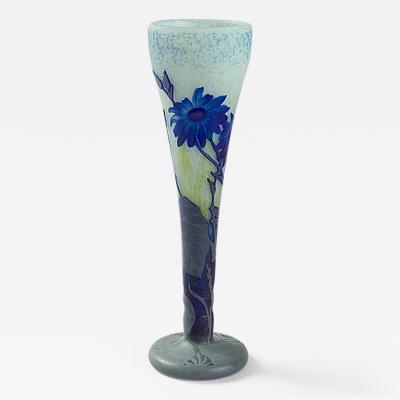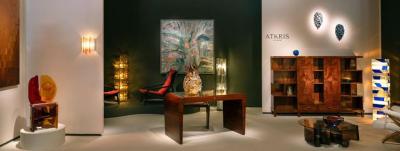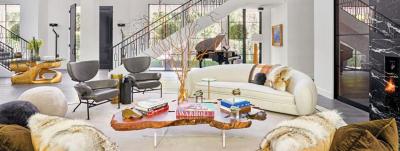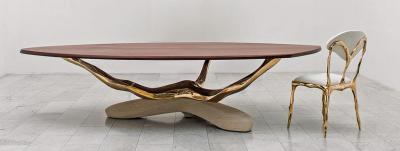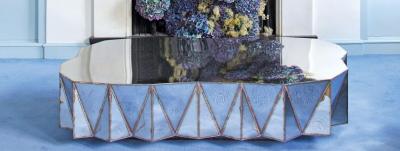Louis Comfort Tiffany in New London
One of the most creative and versatile American artists of his era, Louis Comfort Tiffany (1848–1933) is best known for his brilliant innovations in glass. Louis Comfort Tiffany in New London, at the Lyman Allyn Art Museum, New London, Connecticut, is the first exhibition to focus on the artist’s Connecticut connections. This permanent display features three newly conserved leaded-glass windows from New London and includes over one hundred fine and decorative arts objects that illustrate the various phases of Tiffany’s career through a regional lens.
Although born in New York City, both of Louis’ parents were from Eastern Connecticut. Louis’ father, Charles Lewis Tiffany (1812–1902), grew up in Killingly, Connecticut, where his father, Comfort Tiffany, owned a cotton mill. After working at the mill store as a young man, Charles departed in 1837 with his childhood friend John B. Young to establish Tiffany & Young in New York City, the predecessor of Tiffany & Company. Several years later, Charles married his business partner’s sister, Harriet Olivia Avery Young. Their children, Annie and Louis, followed by younger siblings, Louise and Burnett, grew up spending summers and holidays in Connecticut.
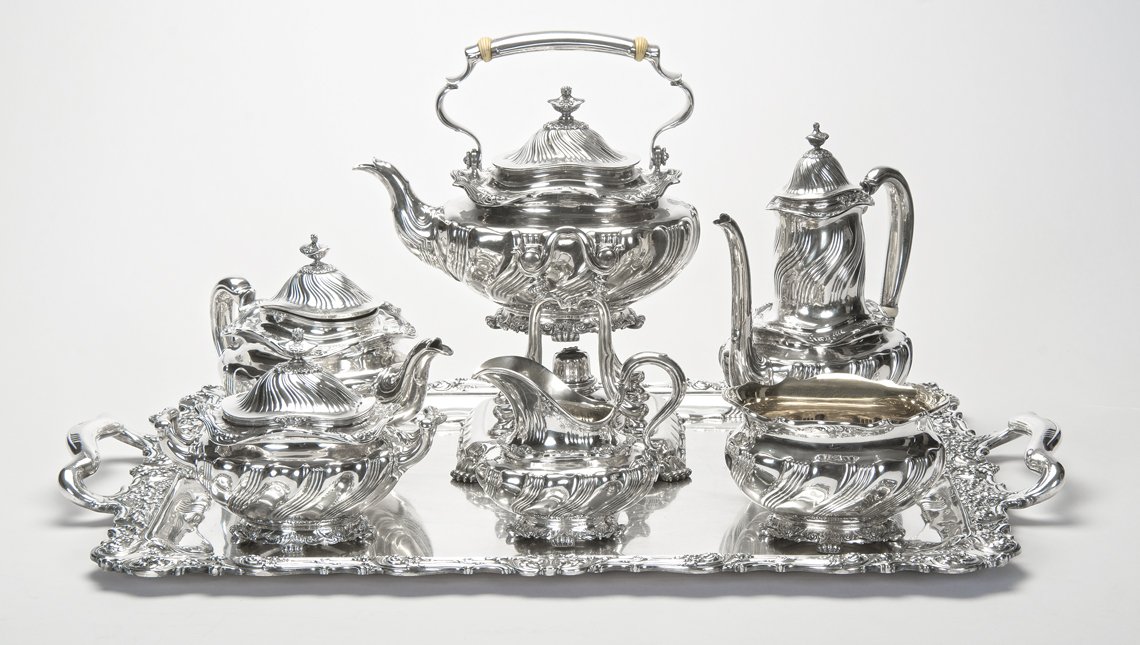 |
Fig. 1: Coffee and tea service, ca. 1890, Tiffany & Company. New York. Sterling silver. Dimensions vary. Lyman Allyn Art Museum, Virginia Palmer Bequest (1937.4.40). |
 | 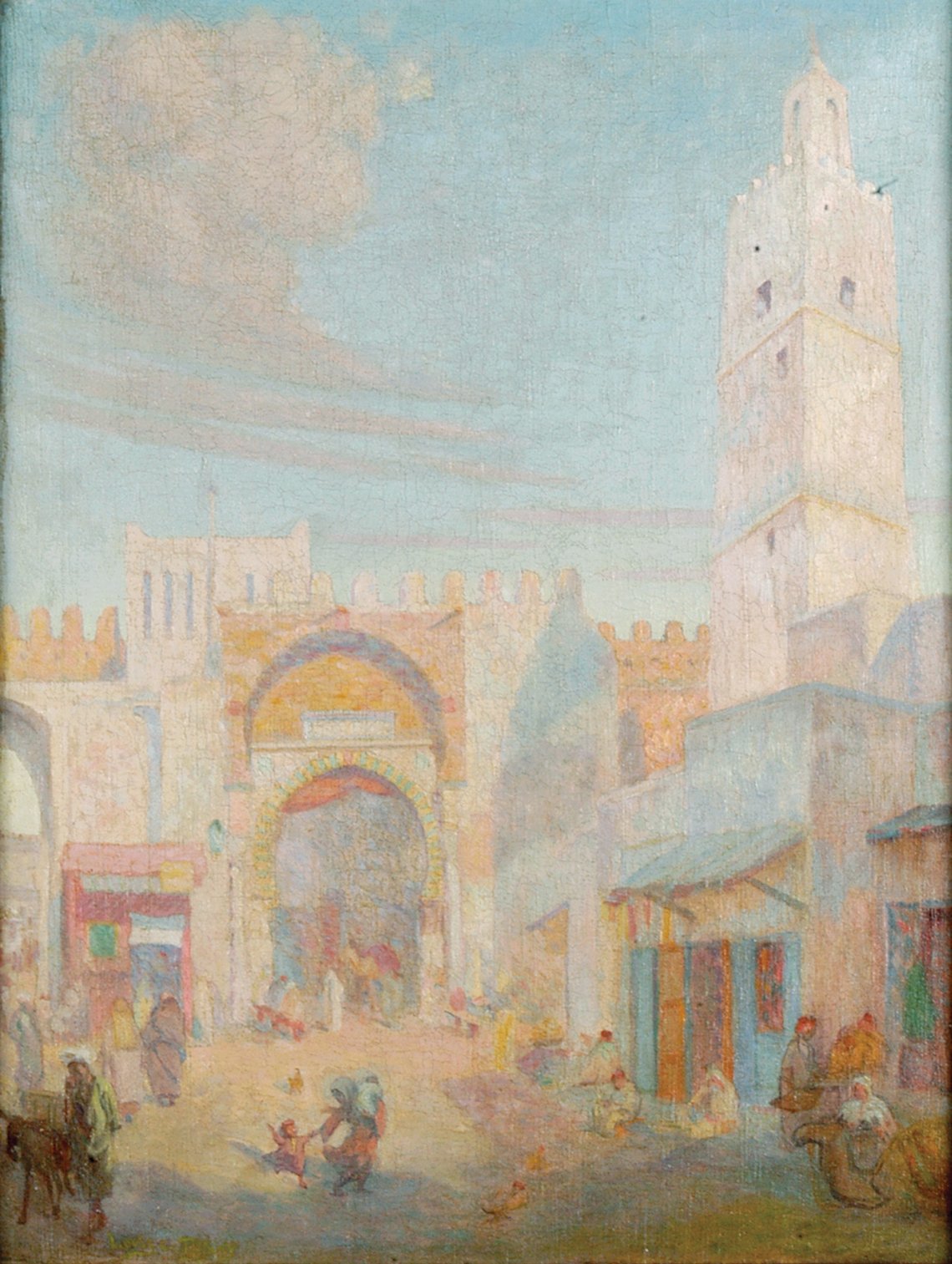 | |
| left: Louis Comfort Tiffany. right: Fig. 2: Louis Comfort Tiffany (1848–1933), North African Town, ca. 1871. Casein on hand-woven canvas 26¼ x 20¼ inches. Museum purchase, Lyman Allyn Art Museum (2018.4). | ||
By the 1870s, Tiffany & Company had become America’s premier source for luxury goods, specializing in jewelry and silver. The firm served the industrialists who led the Gilded Age, including wealthy New Londoners like Frank Loomis Palmer, whose family owned several textile mills (Fig. 1). While Charles Lewis Tiffany devoted his career to cultivating Tiffany & Company, his son Louis began his career on a different path, starting as a painter. Louis was particularly drawn to the beauty of North Africa, where, as he said, “the preeminence of color in the world was brought forcibly to my attention.” 1 North African Town (Fig. 2), likely depicts the Kairouan Souk in Tunisia, showing the street life and historic Islamic architecture that Tiffany found so appealing.
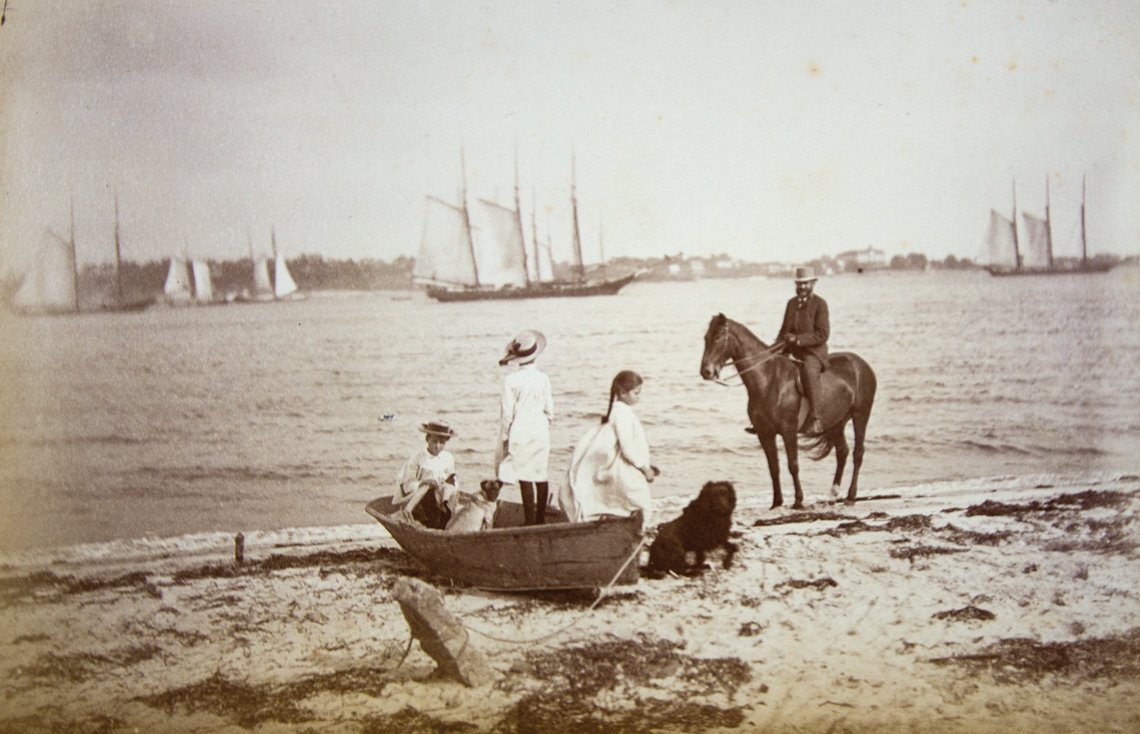 | |
Fig. 3: Mitchell Beach, New London, 1885. Photograph. Alfred Mitchell on horseback with his daughters, Alfreda and Charly (in hats), and Louis Comfort Tiffany’s daughter, May. Courtesy of Mitchell College Archives. |
Annie and Louis Comfort Tiffany both found spouses in Norwich, Connecticut: Annie married Alfred Mitchell in 1871, and Louis wed Mary Woodbridge Goddard in 1872. The Mitchells acquired property (now Mitchell College) near the mouth of the Thames River in New London, which became a frequent destination for Louis and his family. Louis painted Connecticut landscapes in the 1870s, and his visits were a time for family, nature, and art. In August 1877, for example, Annie noted in her daybook that she had painted plates with her sister-in-law Mary, and the next day, “went out with Louis sketching & in the afternoon painted.” 2 Photographs show the Mitchell and Tiffany children at play by the shore (Fig. 3).
INTERIOR DESIGN
In the late 1870s, Tiffany’s interests shifted from painting to interior design and glass. Working with Samuel Colman, Candace Wheeler, and Lockwood de Forest, Louis C. Tiffany & Associated Artists furnished and decorated the grand homes of many notable clients, including Mark Twain, whose mansion in Hartford, Connecticut, is one of the few extant Tiffany interiors. The firm’s Aesthetic Movement designs featured abundant ornamentation, with patterns and materials inspired and derived from the Middle and Far East.
 | |
Fig. 4: Vase, Tiffany Studios, New York, ca. 1905. Glass, H. 11¼, Diam. 4½ in. Lyman Allyn Art Museum; Gift of Alfreda Mitchell Bingham Gregor (1958.31). |
INNOVATIONS IN GLASS
Tiffany’s fascination with glass spurred him to experiment with glass formulas and techniques. He patented a formula for opalescent window glass in 1881, and by early 1893 had opened his own glasshouse in Corona, Queens. Tiffany hired the skilled English glassmaker Arthur J. Nash to oversee the furnaces, soon producing blown pieces that Tiffany called “favrile,” derived from fabrilis, Latin for “handmade.” An example of favrile is the paperweight vase given to the Lyman Allyn by Annie and Alfred Mitchell’s daughter Alfreda (Fig. 4).
TIFFANY STUDIOS
Inspired by forms in nature as well as by art from around the world, Tiffany worked in a wide range of materials. His firm, Tiffany Studios, employed designers and craftspeople to realize his artistic goals, producing leaded-glass windows, lamps, blown-glass vessels, and other decorative art objects. Clara Driscoll, one of several key female designers at the firm, created the Dragonfly Lamp (Fig. 5), which won a bronze medal at the 1900 Paris Exposition Universelle and became one of Tiffany Studios’ best-selling lamps.
Ecclesiastical work formed an important part of Tiffany Studios’ business, as families and congregations across America commissioned leaded-glass windows for churches and sacred spaces. The Tiffany family’s long history in Connecticut gave locals added reason to commission Tiffany windows. The three newly conserved leaded-glass windows on view in the Lyman Allyn’s gallery originated with New London families who had ties to the Tiffany Mitchells.
The Tiffany Come Unto Me window (Fig. 6) was acquired by the museum from New London’s All Souls Unitarian Universalist Church in 2014, after the church had outgrown their original building. The congregation worked with the museum to facilitate the transfer and preserve the window for the local community. The window contains various elements that Tiffany Studios used to make their windows dynamic and expressive, including rippled glass to represent water and specialty foliage glass to mimic the look of light filtering through leaves.
 |
Fig. 5: Dragonfly lamp, Clara Driscoll (1861–1944), designer, Tiffany Studios, New York, ca. 1906. Glass, bronze, H. 25, Diam. 20 in. Lyman Allyn Art Museum; Museum Purchase (2017.15). |
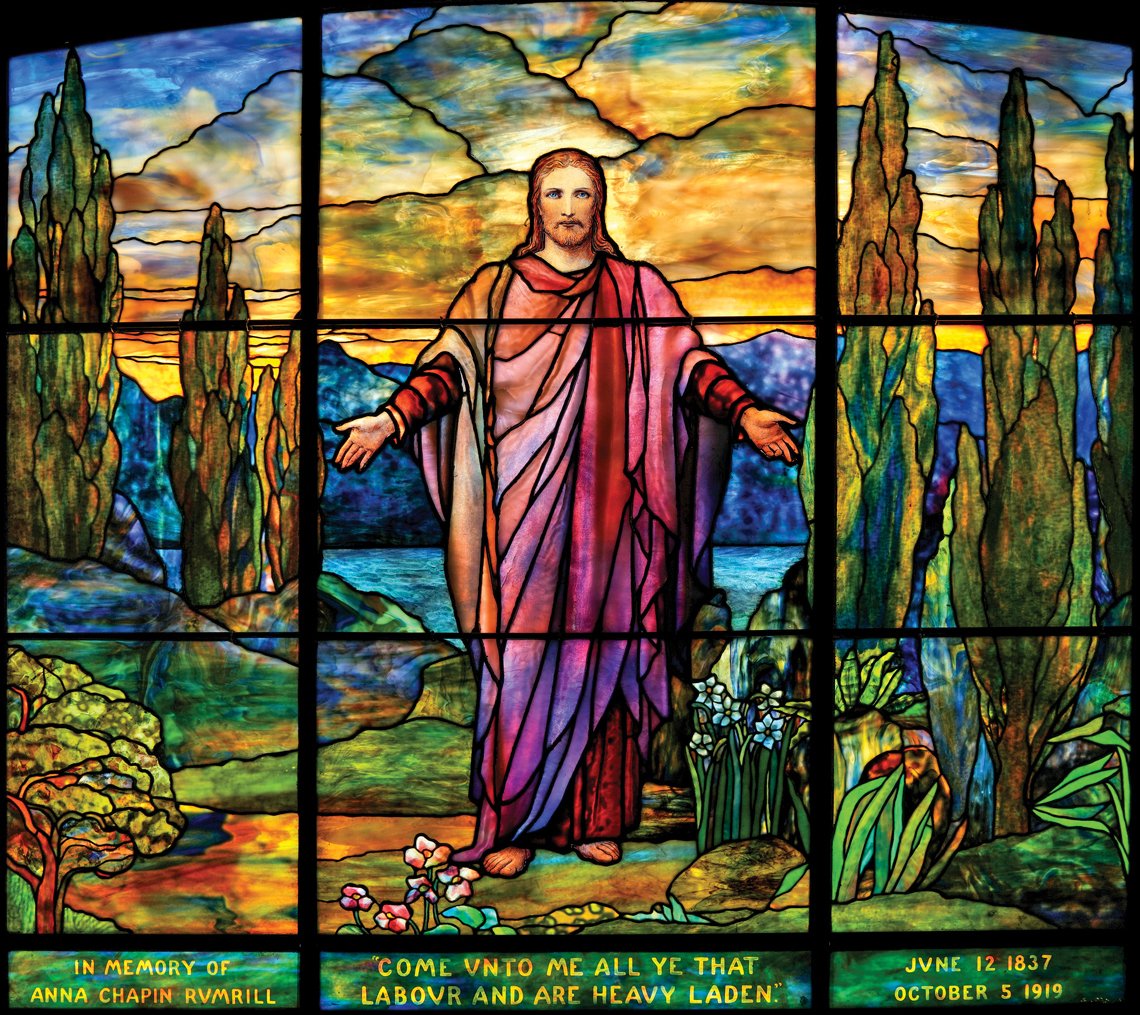 | 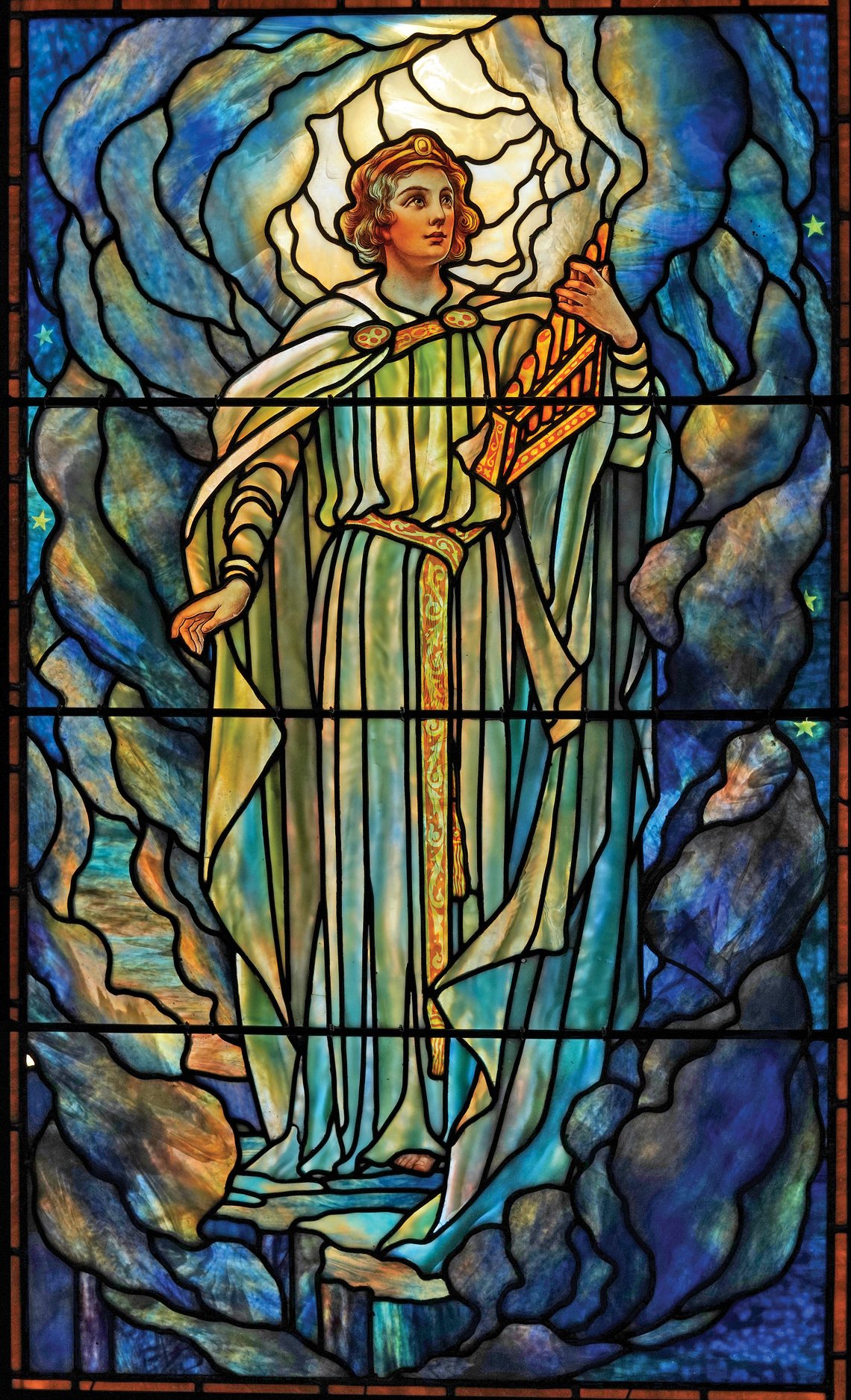 | |
| left: Fig. 6: Come Unto Me window, Frederick Wilson (1858–1932), designer, Tiffany Studios, New York, installed 1924. Leaded glass, 65¼ x 71½ in. Originally installed in All Souls Unitarian Universalist Church, Huntington Street, New London, Conn. Museum purchase, Lyman Allyn Art Museum (2014.7). right: Fig. 7: Saint Cecilia window, Tiffany Studios, New York, ca. 1917. Leaded glass, 59½ x 35¾ inches. Originally installed in the Frank Loomis Palmer mausoleum, Cedar Grove Cemetery, New London, Conn. Long-term loan to the Lyman Allyn Art Museum. | ||
 |
Fig. 8: Views of the Tiffany installation at the Lyman Allyn Museum. |
Tiffany Studios’ Saint Cecilia window (Fig. 7) and J. & R. Lamb Studio’s River of Life window, also in the exhibit, both circa 1917, come from the Frank Loomis Palmer mausoleum in New London’s Cedar Grove Cemetery. Saint Cecilia, patron saint of music and musicians, ascends to heaven holding a portative organ. The River of Life window was stolen from the mausoleum in 1991, but was later recovered and returned, having sustained some damage. Both windows remained in storage for many years but were repaired and restored to be included in the museum’s gallery.
While Tiffany Studios produced windows and decorative art objects for patrons around the world, many of the pieces in the Lyman Allyn’s gallery tell Connecticut stories (Fig. 8). Some objects descended in the Tiffany or Mitchell family, while others were commissioned by the New London locals who knew them. Louis Comfort Tiffany in New London celebrates Tiffany’s artistic experimentation and his lifelong quest for beauty, while also exploring the artist’s history and family ties in Connecticut.
 |
Louis Comfort Tiffany in New London opened in October 2018 and is on permanent exhibition at the Lyman Allyn Art Museum, New London, Connecticut. For more information on the exhibit and on the the Lyman Allyn Art Museum, please visit lymanallyn.org.
1. Louis Comfort Tiffany, “Color and its Kinship to Sound: Address before the Rembrandt Club of Brooklyn,” in The Art World, 2 (May 1917): 142.
2. Annie Olivia Tiffany Mitchell memoranda book, August 8, 9, 1877. Yale University Manuscripts and Archives, Mitchell-Tiffany family papers, MS 701, series III, box 16.
Tanya Pohrt is the Project Curator of American Art at the Lyman Allyn Art Museum. She holds a Ph.D. in Art History from the University of Delaware and previously worked at the Yale University Art Gallery as the Marcia Brady Tucker Fellow in American Paintings and Sculpture.
This article was originally published in the Autumn 2019 issue of Antiques & Fine Art magazine, a fully digitized version of which is available at www.afamag.com. AFA is affiliated with Incollect.com.



















